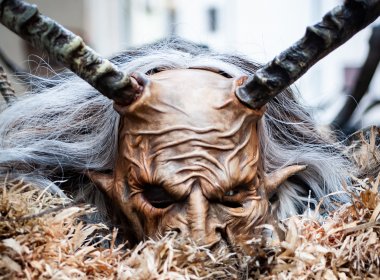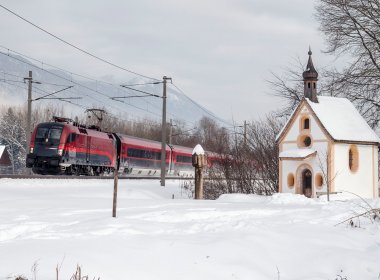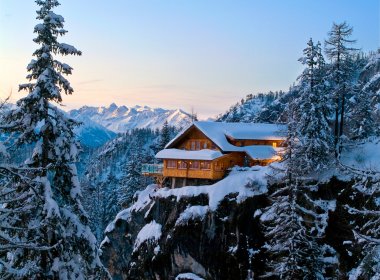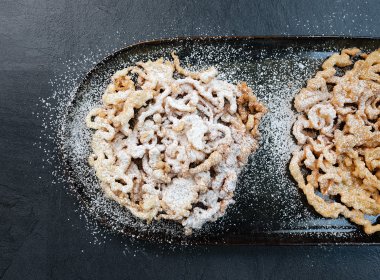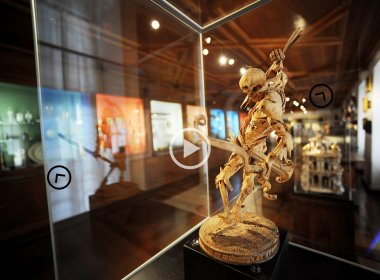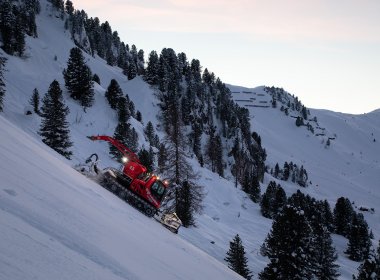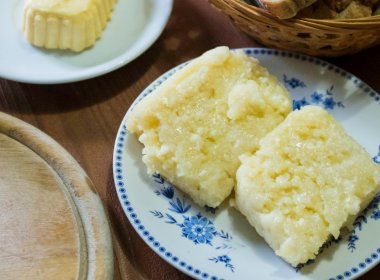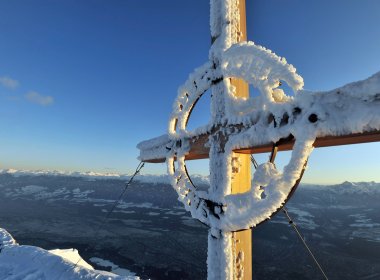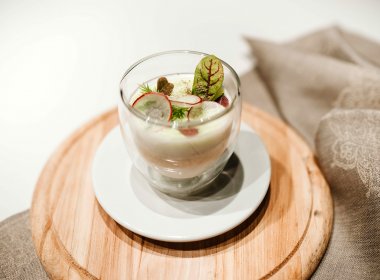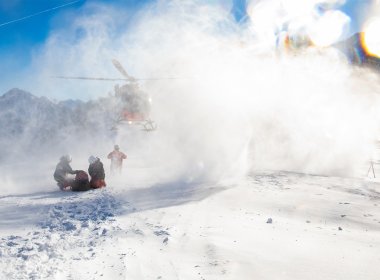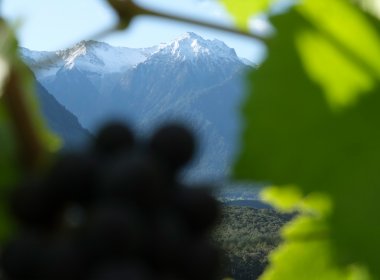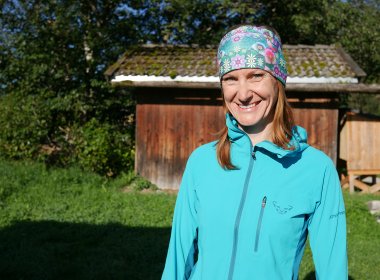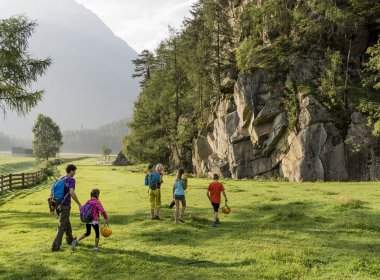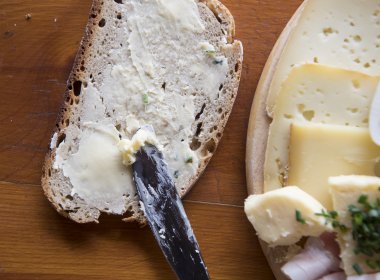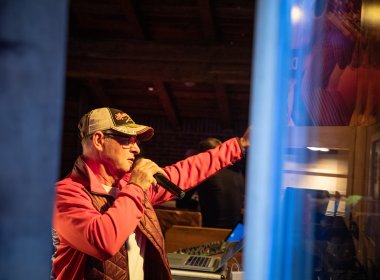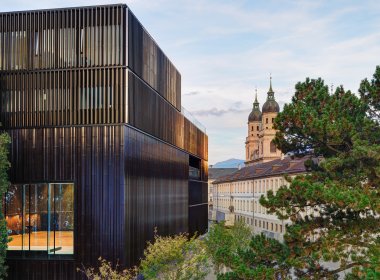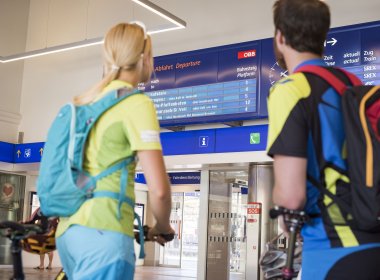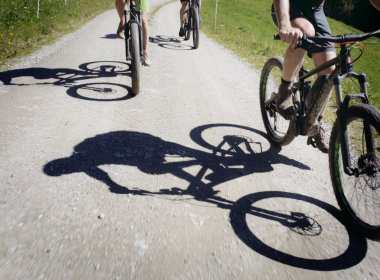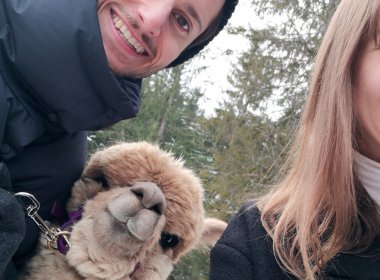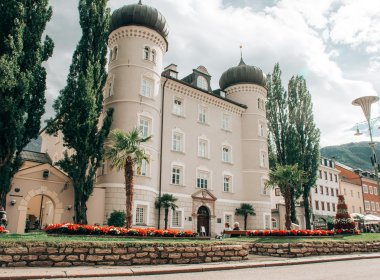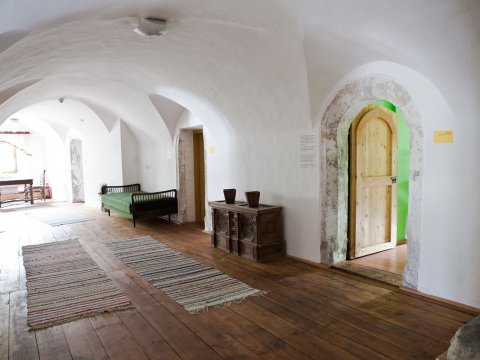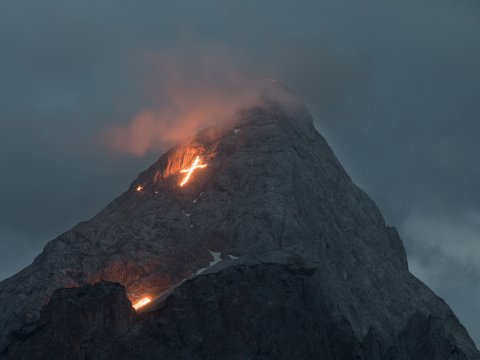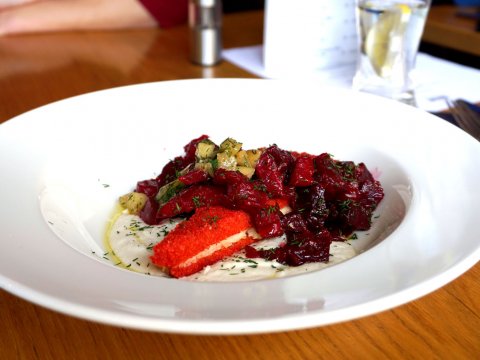Crampons and Rosmary: The Kaunergrathütte in the Pitztal Valley

The glacier, known in this part of Tirol as a "Ferner", stretches all the way up to within a few hundred metres of the hut. The approach is a challenge in its own right – a four-hour trek from the valley far below up to what is the highest Alpine Club hut in the Pitztal Valley. I finally reach the refuge panting for breath and am greeted by Julia's three-year-old son Leo. "Are you the photographer?" he asks.
Just as I have caught my breath and am about to explain, Julia comes out of the hut and gives me a glass of schnapps. "Cheers!" she says with a laugh. At the tender age of 21 she took over the running of this hut ten years ago. Back then she was the youngest "Hüttenwirtin", as the hut managers are known, anywhere in Austria. Since then she has got used to visits from journalists keen to know what inspires someone so young to take on such a job. After all, the Kaunergrathütte is not just some small hut near the valley but a true mountain refuge. Sunday strollers are few and far between here – most of the visitors are mountaineers keen to use the hut as a basecamp to explore the surrounding peaks using crampons and ice picks.


Audio: Julia Dobler talks about her early experiences managing the hut.
Summer in an extreme location
"We work 12 hours a day, 7 days a week all summer," explains Julia as we settle down on the terrace. Suddenly we hear a thud. We both gaze over to the Watzespitze mountain and see a large boulder tumbling down into the valley. "Climate change," she says with a frown. As the glacier melts, she explains, more and more rocks are released from its icy grip. This is truly an extreme location. After all, you can only reach it on foot and supplies are flown in every three weeks by helicopter.
"Everything is a bit extreme, including the weather. A whole week of mist and fog can get you down," says Julia. Leo doesn't seem to bothered by the weather and instead takes a keen interest in the camera being used by our photographer. Then, when he has had enough, he dashes back outside to hop around on the stones outside the front of the hut together with Julia's dog, Aisha.


A pleasure and a passion
"Managing the Kaunergrathütte is both a pleasure and a passion for me," explains the Pitztal Valley native. As I look around the hut I notice lots of little details which underline this attitude: a herb bed with fresh rosmary, a few hammocks for hikers to relax in, a chalkboard with the words 'Aperol Spritz' and 'Apfelstrudel' – all things you wouldn't expect to find so high in the mountains. "I need a helicopter delivery of flowers every now and then to keep me happy," she admits with a laugh.
Sitting at the table next to us is a group of mountaineers making plans for the next few days. "The Kaunergrathütte is really special thanks to the hard work and dedication of Julia," says Andreas Nothdurfter. He is a qualified mountain guide and knows pretty much every mountain hut in Tirol. The hut's excellent food is prepared by Julia's brother, Michael, who uses as much regional produce as possible.

The Kaunergrathütte
The Kaunergrathütte hut lies at an altitude of 2,817 metres at the foot of the Watzespitze mountain in the Kaunergrat Nature Park. The easiest approach to the hut is from Plangeroß and takes around three and a half hours. This trail is relatively easy and should pose no problems for the average hiker. Julia Dobler and her team are at the hut from mid-June until the end of September. There is also a winter refuge at the hut which can be used by skiers in spring. Discounts on overnight stays are available to members of the Alpine Club (club card required). Please be aware that the hut only accepts cash payments. We recommend booking your overnight stay online.

Environmentally friendly basecamp for adventurers
Thanks to its location high in the mountains, the Kunergrathütte is an ideal basecamp for experienced mountaineers. It has space for over 60 people in a mixture of two-bed rooms, four-bed rooms and dormitories. Keen rock climbers will be pleased to know that there is a climbing area just a short walk from the hut.
The hut is often used for workshops and training courses. There is even a small meeting room with internet access. Energy comes from renewable sources, which is why the hut has been awarded the Alpine Club Seal of Environmental Approval. While electricity is provided by solar panels, the heating runs on rapeseed oil and the glacier water is treated using UV rays to make it drinkable.


"See you next year, Kaunergrat!"
The next morning everyone is up early. The smell of coffee drifts across the breakfast room. Everyone is loading up on energy for the day ahead. Leo is already up and about, chatting away to a friendly group of mountain guides who are in a good mood. While they will be heading up into the mountains, for us it is time to head back down into the valley.
My thoughts turn to Julia. What must it be like for her to say goodbye to the hut after a whole summer here? "Leo always gets to fly down in the helicopter and I walk down. Before the hut finally disappears from view, I always turn around one last time and say 'See you next year, Kaunergrat!'".
Photos: Bert Heinzlmeier / Klaus Brunner










